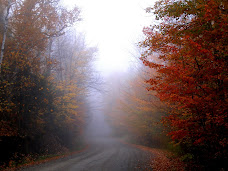
The "red tide" is actually the result of an algal bloom, an event in which
marine or fresh water algae accumulate rapidly in the water
Source: Press TV
http://www.presstv.ir/detail/138985.html
The Lake Urmia in Iran's West Azarbaijan province has turned red as the result of an environmental phenomenon known as the "red tide."
Soap-like foam substance produced by algae started to redden Orumieh from the East Azarbaijan coast and gradually covered the whole lake.
The "red tide" is actually the result of an algal bloom, an event in which marine or fresh water algae accumulate rapidly in the water.
The effect of excessive algae on fish can be lethal. It produces oxygen radicals which can damage fish gills, possibly leading to suffocation.
Some environmentalists say the phenomenon is caused by nutrient loading from human activities or industrial and city wastewater which include nitrates and phosphates.
Other experts, however, say the algae cannot survive in the salty water of the Lake Urmia and a possible change in the salt compounds might have caused the incident.
“When the salinity reaches the point of over saturation, the salt compounds change,” environmentalist Masoud Baqerzadeh-Karimi told Mehr News Agency.
“The change causes some types of salts, especially those with sodium compounds and white crystals, settle down and those with magnesium and orange crystals remain in the water,” he added.
Baqerzadeh-Karimi rejected the role of wastewater in the phenomenon, saying that in that case “the lake should have turned red many years ago.”
Head of West Azarbaijan environment department Hassan Abbasnejad believes a type of algae is responsible for the incident.
“Dunaliella Salina is a type of algae that creates a red substance in order to adapt to salty environments and survive,” he explained.
The world's second largest salt water lake on earth, the Lake Urmia has faced a lot of environmental problems during the last few years.
Experts have warned that ecological factors and human activity will lead to the drying up of Lake Urmia in the near future.
The maximum depth of the lake has fallen from 12 to six meters and salt levels have reached 340 grams per liter, way above the standard level of 180 to 220 grams per liter.
The water body and its surroundings are home to some 212 species of birds, 41 reptiles, 7 amphibians, and 27 mammals, including the Iranian yellow deer.
It is considered to be one of the largest natural habitats for the tiny Artemia, which serves as a food source for migratory birds, such as flamingos.
UNESCO has registered the lake as a Biosphere Reserve and it is listed as a wetland of international importance under the 1971 Ramsar Convention.

















a.jpg)

a.jpg)








No comments:
Post a Comment
Thanks for commenting on this post. Please consider sharing it on Facebook or Twitter for a wider discussion.